On a Friday afternoon last July, the interior of a Dublin school couldn’t have contrasted more with the beating sun outside. Grey uniforms, grey lockers, grey breeze block walls. The utilitarian drabness, both familiar and anonymous, steeped in functionality, the palate quashing any potential for flourishes. In a classroom off the main hallway, hair and make-up artists studied the scene unfolding on a television monitor below a clock stuck at 12:43, the red second hand attempting movement and repeatedly stalling like a dying insect.
The actor Paul Mescal entered the frame, a black backpack slung over his shoulder. Slate 785. Take one. A crew member spotted something awry with one of the extras. “One of those girls is wearing boys’ socks. They’re too short.” Attention to detail had not abated on day 36 of filming the television adaptation of Sally Rooney’s enormously successful novel, Normal People.
Later, in the on-set catering bus, actor Daisy Edgar-Jones sat in her school uniform. At first sight, Mescal and Edgar-Jones, who play the two lead characters, Conall and Marianne, are impossible to separate from their roles. Produced by Element Pictures and screened on RTÉ next week (along with the BBC and Hulu), Normal People marries two of Ireland’s most talented artists - Rooney and director Lenny Abrahamson - a duo whose work is filmed with rhymes and echoes of the other.
The book, a study of a burgeoning and faltering teenage relationship, compounded Rooney’s presence as the essential young novelist of her generation, along with her debut, Conversations With Friends.
Lenny is the master of the tiny little gesture or facial tick, <br/> and allowing you understand what's happening for a character, and Sally's writing absolutely allows that
Her writing is often characterised as “economical”, a word that can confer sterility. Minimalism might be a better term, but what is minimalistic about the universe contained within our emotional interiors? There is a sort of dull, familiar pain in the early episodes, as Conall and Marianne’s relationship fumbles and falters, both teenagers attempting to cross the familiar terrain of a foundational love, one where they lack the emotional confidence and even the vocabulary to halt uncertainties before they cascade.
The viewer is left somewhat helpless, confronting the odd realisation that young heterosexuality is so well mapped, yet still somehow unnavigable. The complexity of translating a book so rooted in subtlety to screen has been achieved with incredible deftness. If the book demanded binging, the television show urges attention, as if to say: watch everything.
Element’s Oscar-nominated producer, Ed Guiney, pursued the project, with the BBC willing to give it the go-ahead, bolstering Element’s case for optioning the novel.
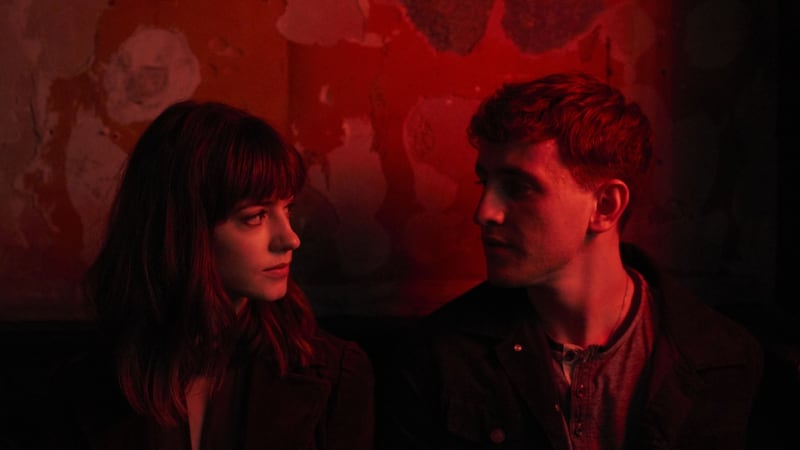
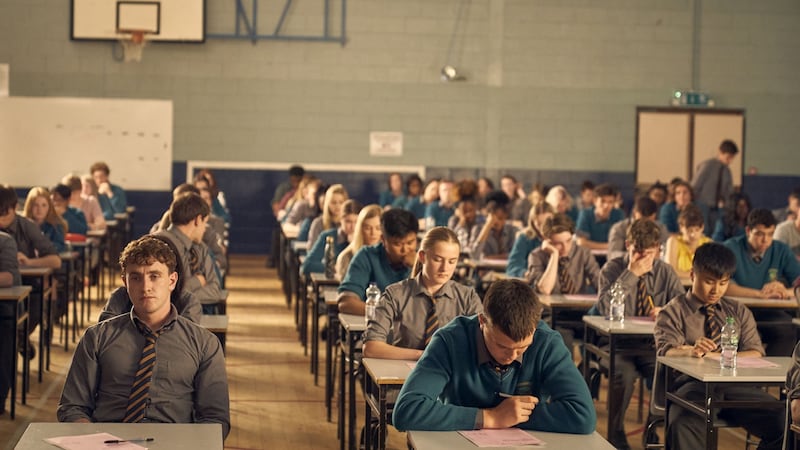
“I think some of the strengths of Sally’s writing are also strengths of Lenny’s filmmaking,” Guiney says. “Lenny almost removes the lens between you and the actor, so you have this really strong intimate relationship with the characters in his films, and you feel like you know them as very truthful people - or he renders them very truthfully, I should say . . . Lenny is the master of the tiny little gesture or facial tick, and allowing you understand what’s happening for a character, and Sally’s writing absolutely allows that.”
Rooney wrote the Normal People scripts, as she does most things, sitting on the couch in her home in Dublin’s Liberties. As the final touches were being put on the show, Rooney was in New York, working on a new novel.
The process of adaptation began with her “trying to actually read my book and figure out what exactly happened in it”. When she was writing Normal People, she wrote countless scenes that never ended up in the novel, “So it was a process of willowing out and trying to decide what’s relevant enough to include. The TV show was almost like a replication of that experience in a new way, trying to decide what really were the moments when something significant shifted, and then the secondary question of how then do we get that moment across on screen in a way that tries to retain the impact of how I tried to / as a novel.”
When a book is out in the world, most writers navigate the experience of the text suddenly existing separately from its author. Having spent so long shaping something that is a figment of one’s imagination, with few people even reading a word for a long time, it goes out into the world and, “you’re kind of rationally aware that something has shifted and it’s now its own thing and it’s not just yours any more”. But working on a television adaptation brought Rooney into contact with that experience in a new way.
The large number of people involved in a television production - far removed from the primarily solitary process of being a novelist - all of whom have their own ideas and attach their creativity to the project in particular ways, forced her to encounter her work as something completely separate from herself, an experience she describes as “surreal”.
While writing Normal People, Rooney found Conall and Marianne were, in a way, projections of her own psychology, “it’s not autobiographical . . . but I did feel that as characters, as people, their psychology was very much drawn from facets and aspects of my own psychology as a younger adult and even now”.
The adaptation altered that connection. She found herself experiencing a different range of emotional responses to the characters. For example, often when she was working on the show, and watching it, she found herself feeling protective towards the characters. “They seem so young and I worry about them, whereas when I wrote the book, I didn’t feel protective of them at all.”
She appreciates now that she is older than them - Rooney turned 29 in February; Conall and Marianne are Leaving Cert age at the outset of Normal People - and she found herself “rooting for them. When I was writing the book, it would have been impossible to write the kind of book I did if I felt that about them, if I was trying to protect them from the blows of life or whatever.”
Upon rereading the novel, she was struck by how much dialogue was in it, thinking, oh, this is going to be really easy to adapt. All the characters do is hang around and talk to each other. But their own particular quietness and isolation raised questions about the potential for the dramatic aspects of visual storytelling.
“As a writer of a novel, everything has to go on the page, whereas as the writer of a script, I had to learn: this is one building block in the storytelling, it is not the full story, and you have to trust that the director and the director of photography and the actors and everyone involved - lighting, hair and make-up - are all going to be adding tiles that will eventually build the mosaic of the story.”
Having optioned the book in spring 2018, and with the BBC’s commitment, Guiney and Abrahamson brought the project to Los Angeles the week before the Oscars in 2019, and pitched it to about 12 platforms. They had one script, one book, and one hour-long meeting to make the sell, and went with Hulu.
They've done such a great job of rendering those characters as proper, breathing, real human beings. It's that kind of closeness that you have with fictional characters, which is very strange
Producer Catherine Magee came on board early on. Prep on the show began in April 2019, and they were shooting by the summer. It was an accelerated process.
Magee said that she had never been on a set where a book was hanging around so much. Cast and crew had marked pages, actors were able to recite entire passages. “At the same time,” she said, “you had to leave the book at the door.” But when Rooney arrived on set, the crew queued to meet her.
The shoot was in two blocks, with the two directors (Abrahamson and Hettie Macdonald) shooting six episodes each, with two weeks per episode. Guiney talks about the “braintrust” in Element who constantly interrogated the work, including Anna Ferguson, Emma Norton, and Chelsea Morgan Hoffmann. Rooney and Alice Birch collaborated on the scripts for the first six episodes, Birch then wrote the next five, and Mark O’Rowe wrote the final episode.
“She is such an elegant writer,” Birch says of Rooney. Birch, who wrote the film Lady Macbeth, and was the story editor on smash hit Succession, came to Dublin to meet Rooney, and connect with some of the locations depicted in the book. They had coffee, and Rooney gave her a tour of the places she had in mind while writing.
“You never get access to that as a writer,” Birch says, “so that was gorgeous.” Birch’s first reading of the novel was an emotional one (compounded by jet-lag and the demands of her young child). Rooney had already written drafts of the first six episodes by the time Birch was on board. Birch did a second pass on them, and then continued. “I mean, honestly, some novelists make screenwriters, and others don’t, and God knows I couldn’t write a novel, but she had done an incredible job.”
Birch had actually agreed with her agent that she didn’t want to take on any new projects, but made an exception for Normal People such was her desire to be involved, “I said, well, obviously we’re doing this.”
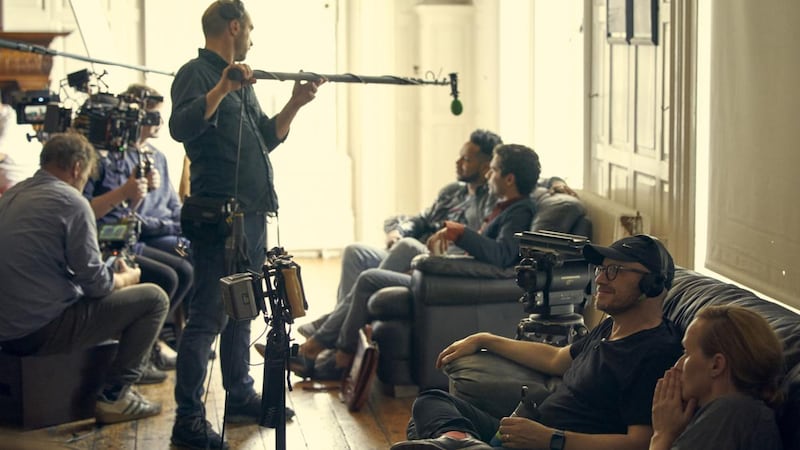
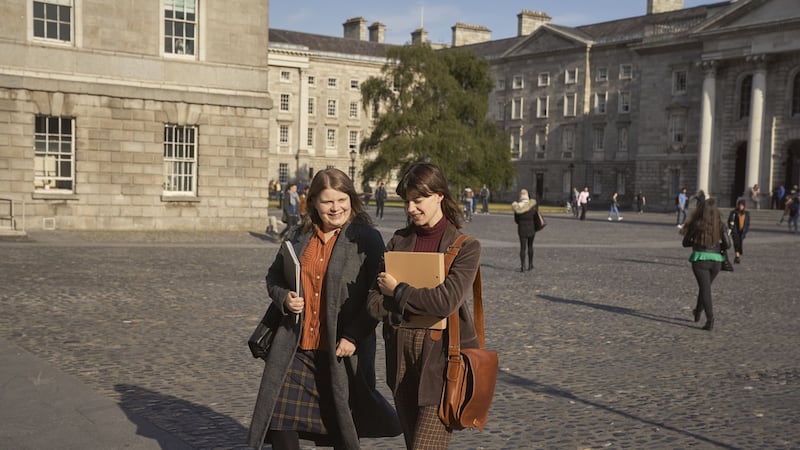
Sometimes, when Guiney watches episodes of Normal People back, he half-expects to run into Edgar-Jones and Mescal’s versions of Marianne and Conall on the street, “It’s quite weird . . . they’ve done such a great job of rendering those characters as proper, breathing, real human beings. It’s that kind of closeness that you have with fictional characters, which is very strange.”
Guiney ultimately feels that if they hadn’t found those actors “we couldn’t make it . . . It was a bit like the experience of casting the boy in Room, that if you didn’t find that boy [it wouldn’t work] . . . Jacob Tremblay was the only person we came across who could play the boy in Room. In the same way, I think finding Conall and Marianne felt like the most important thing.”
The most experienced actor on set was Sarah Greene (Rosie, Dublin Oldschool), who plays Conall’s young mother, Lorraine. Greene’s skills as an actor chime with the unshowy depth present throughout the piece, and her character is a rare figure of stability in Conall’s world. Louise Kiely cast the show - “one of those things that you can’t get wrong”, Abrahamson said.
When Mescal was working in the Abbey Theatre, performing in an adaptation of another novel, Louise O’Neill’s Asking For It, Kiely- who viewed about 1,000 auditions in total - told Element, “You have to see this guy.” Mescal was initially nervous about meeting Abrahamson, but found himself quickly disarmed by the director’s relaxed disposition.
He had read Normal People a number of times before his audition. Like many, his reading experience was “in a condensed period. I think that really helps with the reading of the book, that you’re sitting with those characters in the pressure cooker of the novel.”


Finding the text simultaneously claustrophobic and expansive, he says, “I think the predominant attachment I had to him [Conall] is the social anxiety in school, even though he’s in a privileged social position - not in terms of money or class - in terms of the societal class that his friends and the world puts on to him. It doesn’t really allow him a lot of emotional wiggle room. That comes to fruition when he goes to college and there’s less of a sure footing with that, because he goes from being on a pedestal in secondary school to being cast into a brand new environment; brand new people, different social values, and all those things turn him a little bit.”
Mescal talks about the “displaced feeling” the character undergoes, and while he views Conall as “incredibly intelligent”, his “capacity for love is internalised”, never really reaching the surface, but always ticking in the back of the head.
Conall has rubbed off on Mescal a bit. He felt a lot of self-imposed pressure to do the character justice, and the process of emotionally inhabiting Conall has made him slightly quieter. “He’s cerebral and he’s retracted a lot, and I think that has maybe filtered in a little bit.”
Mescal grew up in Maynooth, and went to drama school at the Lir in Dublin, part of Trinity College. When asked by another journalist if there were any recent performances by “leading men” he admired, he raised Michelle Williams’ work in Manchester By The Sea. After he left a roundtable discussion with journalists on set, he asked someone handling the show’s publicity whether he did okay.
Normal People elevates the work of incredibly talented women
Edgar-Jones’ soft British accent is a surprise given how expertly she renders Marianne’s accent on screen. In the run-up to filming, she valued the rehearsal process. She and Mescal got to know each other over weeks, talking about the themes of the book - self-hate, sexuality, depression. Rooney shared with them a playlist she had made for her characters while writing the novel - Joy Division, Leonard Cohen, Bombay Bicycle Club. Having not gone to university herself, Edgar-Jones relished living that life vicariously through her character. The ease of Dublin resonated with her - “In London it takes 40 minutes to get anywhere.”
When she first got the scripts, she was nervous about reading them because she wanted them to be as good as the book, “and they were”. She knew part of Abrahamson’s talent lay in his ability to excavate the emotional interiors of characters by elevating the small details he tends to hone in on. “It’s so easy for us, really, because they both naturally marry together - his directing and her writing. It’s sort of perfect.”
She mined the emotional terrain. “The challenges they face massively come from within themselves. They feel like they have hurdles, and there are things going wrong that affect their relationship, but a lot of the time it’s their own personal inner thoughts that mess them up, really.”
To navigate the sex scenes, intimacy co-ordinator Ita O’Brien was enlisted, a person known for her work on Netflix’s Sex Education and the BBC’s Gentleman Jack, who, Abrahamson says, gave agency to the actors, and designed her work to allow actors to “think of it as a piece of choreography, a piece of dance, almost”.
It’s worth noting that in the often male-dominated dynamics of a television crew, Normal People elevates the work of incredibly talented women, and not just in terms of the writers and Macdonald’s direction. Both directors of photography are women, Kate McCullough (The Farthest) and Suzie Lavelle (His Dark Materials, Doctor Who).
Rooney's contemplative prowess intersects mostly <br/> with Abrahamson's artistic skillset. It's a rhythm, <br/> a sense of watchfulness
Guiney and Abrahamson hadn’t made a project in Ireland together since Frank, starring Michael Fassbender and Domhnall Gleeson. There is a comfort to shooting in Ireland, Guiney said, in part because Irish crews are of such a high quality, a refrain often repeated by both indigenous and visiting productions.
As a television show, Normal People is a quiet game-changer. At a time of global chaos, when the television and film industries have effectively shut down, there is much discussion about what will be “relevant” post-pandemic.
Watching Normal People, it becomes obvious that escapism will be normality, fantasy will be mundanity, slowness will be compelling. Throughout, darkness is often used as an indicator of a threshold moment. When Conall enters Trinity College, the light vanishes as he walks through the front arch, filling the screen again when he emerges into the front square. It is not a trick, it is the reality for anyone who has taken those few steps; light, dark, light.
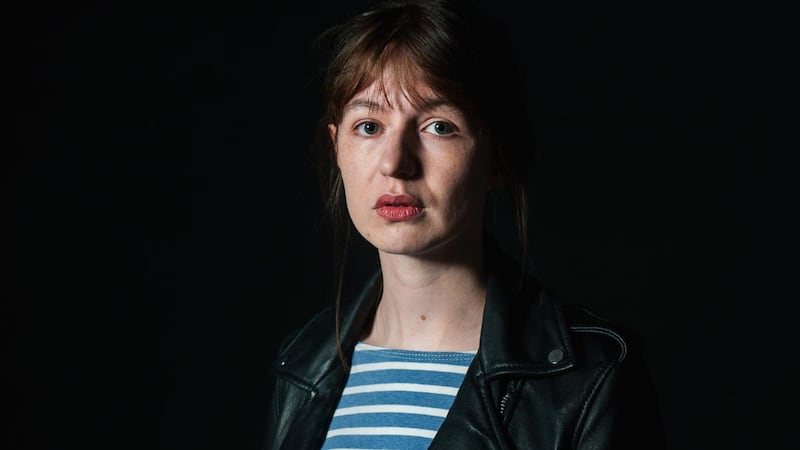
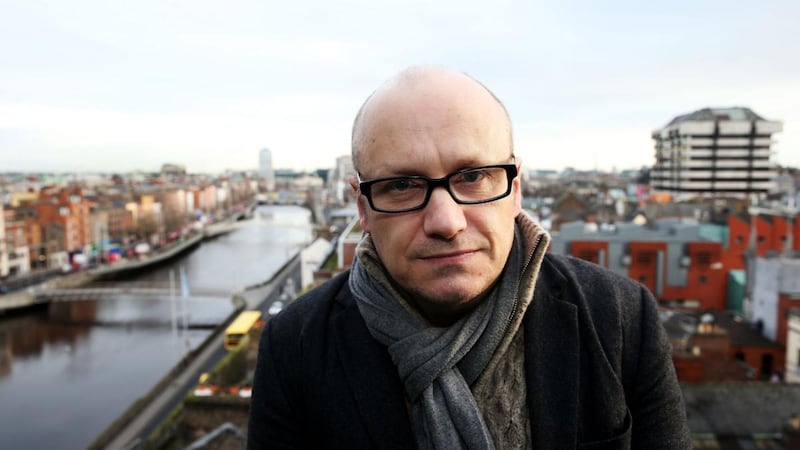
For Abrahamson, “the real spacial dimension in screen storytelling is time. If you look at some of these spaces - interiors, whatever - it’s just being prepared to sit in them for a while. We’ve all seen the student film where someone sits on their bed staring into space for a huge long take, and the idea is that’s supposed to be deep, but it isn’t, it’s just kind of empty. But I think if you are listening and watching the people, and you allow the energy that passes between them to sit in the air for a while, that’s as much an issue of time as it is space. And it’s to do with quietness, and it’s to do with holding, and then switching and changing.”
Abrahamson has both an intuitive and honed understanding of the elastic of movement and action, coupled with the time required to reflect, sit, and watch. It is both a musical kind of tempo and a spacial one.
When he was beginning to think about film as a teenager, the one thing he realised he may have a skill for, was interpreting how time feels in a particular room. As a child, he says he would watch people talking and play it back in his head, considering the flow, or the certain pace that a conversation creates, and what it does to the room that it’s in. It is perhaps this quality where Rooney’s contemplative prowess intersects most with Abrahamson’s artistic skillset. It’s a rhythm, a sense of watchfulness. “Her technique in Normal People,” Abrahamson says, of “take me back three weeks and show me this small thing that happened - that’s a way of going: now, take a deep breath, listen, observe for a moment, because what I’m going to show you means something.”
Normal People will air on RTÉ One on Tuesday, April 28th












